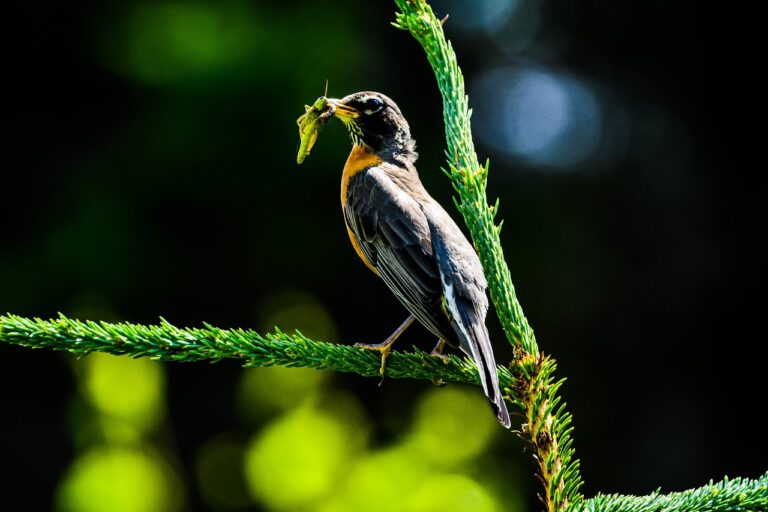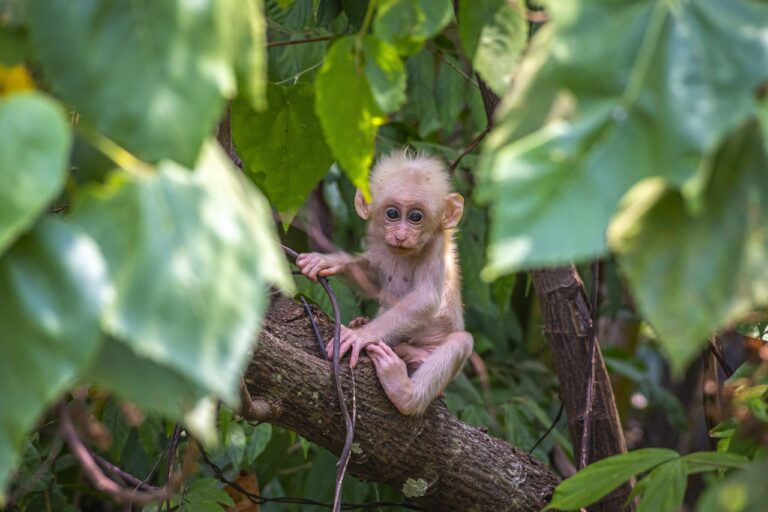At The Carbon Offset Company, our goal is to enable businesses and individuals to align with the planet. One of our major initiatives is planting trees across the world. Not only do trees remove carbon from the atmosphere, but are key to biodiversity and a healthy environment. At every stage of their lifespan, trees are beneficial to millions of species. Below we’ll explore the benefits trees bring to wildlife.
How Trees Positively Impact The Food Chain

Trees of all ages (and even dead ones) play an important role in keeping animal populations stable and healthy. From the time they pop out of the ground, trees are relied on by 2.3 million animal species worldwide.
As the tree begins to grow, they immediately provide benefits to local people and wildlife. It starts with food. Many animals depend on the leaves, fruit, nuts, and sap that various trees create. This creates a thriving ecosystem that is heavily dependent on this tree-produced food. Tree-dwelling creatures are a critical link in the food chain that cannot be replaced. This doesn’t only impact these critters, but also those higher in the food chain. If small herbivores can’t find food, animals that prey on them will also starve. Trees play a huge role in feeding animals and supporting overall biodiversity.
Wiping out forests can have dire consequences for humans and animals alike. As deforestation and natural disasters continue to decimate forests, we must strive to replant them. Without trees, there are very few places for birds, insects, and other animals to find the food they need. If the forest goes, the rest of the ecosystem goes with it. To protect the food chain, we have to ensure there are enough trees to produce food. However, there are even more benefits that trees provide outside of food.
Trees Provide Habitat For Millions Of Animals

On top of providing the energy to keep animals going, trees are used by countless creatures as shelter or a home. It starts at the top. Thick leaves and foliage give animals a safe place to sleep away from most predators. Without this haven, animals would be exposed and overhunted. This will become even more important as the planet warms. Shade provided by trees will help keep critters cool during hot summer days, while also keeping many close to their preferred food source.
This dual purpose is why many animals choose to make permanent homes among the branches. Birds, rodents, primates, and even some reptiles benefit from the prime real estate trees provide. When trees die, they are still useful and continue to be great habitats for countless animals.
It can take a hundred years for a tree to decay once it hits the ground. But that doesn’t mean the tree is done enhancing biodiversity. Decaying wood brings nutrients back to the ground which supports new plants, insects, fungi, and more. This is what makes trees such an amazing addition to our environment. During their entire lifecycle, trees benefit all forms of life around them.

Every tree we plant at The Caron Offset Company provides all these eco-benefits on top of capturing carbon from the atmosphere. If you’re looking to get involved, consider signing up for one of our tree planting plans. They are designed to help you live carbon neutral and support wildlife across the globe. Wondering where we plant? Check out the map here. With 88 planting projects supported in 5 countries, countless lives have been changed by trees. African forests are one of our top tree-planting locations. We love how many species are supported by these trees. One of our favorites is the chameleon. They are incredibly interesting and have evolved to take advantage of trees. Let’s dive deeper into the benefits that trees provide chameleons.
How Does Planting Trees Help Chameleons?
Chameleons are one of the coolest animals on the planet. I mean come on, they change colors, launch their tongue, and look awesome. So how do trees help these dudes flourish? They provide the perfect habitat to keep chameleons safe and their prey on alert.

Chameleons choose to live in trees and it’s not hard to understand why. These amazing creatures utilize crypsis (animal camouflage) to hide and hunt. Branches and leaves both provide a great backdrop for chameleons to blend in without using their color-changing ability. Natural selection has left them colored like leaves and branches. That’s how we know chameleons evolved to live in trees. Whether they are avoiding detection from a bird flying overhead or waiting for prey, trees are the perfect place for these creatures.
Staying off the ground and among the branches keeps the chameleon concealed. Birds and snakes are both known to dine on unsuspecting chameleons. It’s very difficult to hunt chameleons in trees because they are hard to see. Their crypsis keeps them safe in many situations. Speaking of prey, once chameleons are close enough to unsuspecting insects, they use their ballistic tongue to suck them up. It’s one of the coolest evolutionary traits in the animal kingdom.
Chameleons are one of the countless species that benefit from trees. Support biodiversity and the climate by being part of the solution. Sign up for one of our tree planting programs. They’ll enable you to live a carbon neutral life while also helping support wildlife and biodiversity. To date, we’ve planted 1.3 million trees across the globe. By signing up, you can be part of the solution to climate change, and enhance habitat for animals everywhere.

